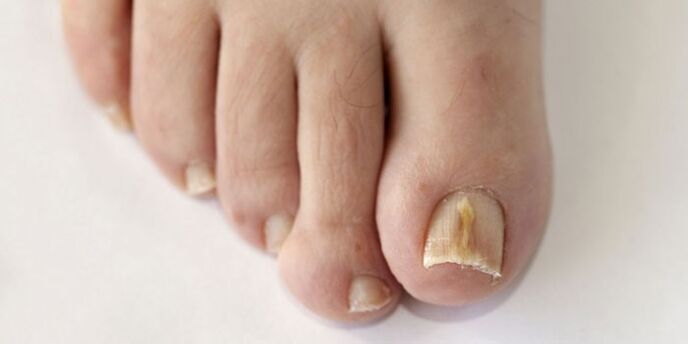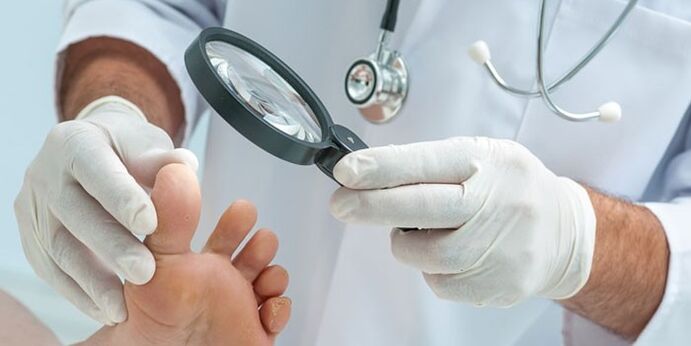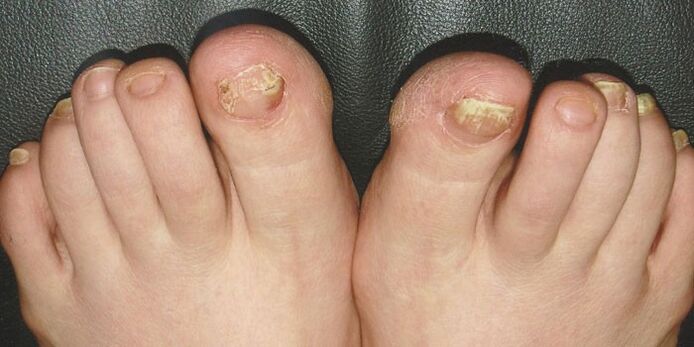Many people don’t even suspect sweating, causing an unpleasant odor due to tumor disease.This is a sinister disease whose treatment takes a long time and does not always bring about a hundred percent result.To effectively treat the disease, it is necessary to identify signs of nail fungi that are suitable for nail plates, feet and legs as soon as possible.
What is nail fungus
Infectious diseases caused by mold and yeast-like mushrooms are called tumor diseases.According to WHO statistics, from 5% to 15% of the global population suffers from disease.Microorganisms can affect the nail plate, changing its color, shape and hardness.Dermatologists have noticed cases of frequent illness in adults and children.With improperly selected treatment, serious complications may occur until gangrene.
The infection is caused by failure to comply with personal hygiene rules, high humidity in bathrooms and saunas, and mechanical injuries.Regular contact with detergents, water can lead to the development of the disease.A narrow gap between the flat feet and fingers increases the risk of disease.The fungus often appears in people with weak immune systems, and then other organs are infected with fungal infections.

What is the fungus on the legs?
If you are interested in how to determine the fungus on your leg nails, check out the free edges and mouth plates at the end of your fingers.In the distal form of the disease, the nails turn yellow and the board is opaque.The second degree of pathological characteristics is hyperactivity.The disease is manifested by keratosis in the nail bed, which is much thicker than healthy organs.The final stage is characterized by malnutrition and matrix failure.
symptom
Few people are concerned about the initial symptoms of thyroidoma.The sooner you notice the disease, the more effective the treatment will be.Symptoms of nail fungus:
- Change the integrity of your nails;
- Change the color of the board;
- Relax nail balls;
- Pain caused by pathology development;
- Itchy skin, burning around the affected area.
White plaque on nails
The appearance of the white dot is one of the first signs of the nail fungus on the legs.The patches look like they are different sizes, longitudinal stripes or round spots covering the entire nail bed.If you notice changes in the oral surface at the end of your finger, see your doctor urgently, and self-assessment can negatively affect your health.
Logo
The disease causes several types of pathogens to manifest in different ways.Depending on the nature of the microorganism, the signs of fungi on the nails on the legs vary:
- yeast.Using this pathogen, the disease can be identified over a long period of time.Peeling occurs, but there may be no itching in the skin near the affected area.
- Mold.It occurs in 1% of patients and is often seen in HIV-infected patients.
- Skin plants.The most common cause of this disease is the delay in tightening the nail plate.Pathogenic organisms can also affect the legs and feet and can spread to the folds of the teeth.In most cases, the thumb and a little finger are marveling.

The first sign
Most people don’t notice how fungi begins.Symptoms can occur when most nail plates are damaged.Almost immediately, infection can only be seen in the footsteps.The fingers start to blush and peel, and itching occurs.Gradually, deeper skin lesions occur to the formation of cracks.An important sign of disease attacks is the change in the color and structure of the plates.It becomes fragile, constantly damaged, causing severe pain.
How to show different types of Onychomycisos
There is no single clinical situation in this disease in the lower limbs.Nail fungi manifest on the legs depends on the type of disease.To obtain the maximum treatment results, doctors distinguished the following fungi varieties:
- Normal.At the beginning of the disease, the color of the disease plate changes while the thickness and natural light remain unchanged.There are yellow or white spots and stripes on the sides of the plate.The nails gradually changed the color completely, but their thickness remained normal.With this disease form, a comprehensive nature was observed - the plates cannot grow into the nail bed.
- Thick.This disease is diagnosed by thickening plates.The scales begin to grow under the nails.The plate gradually disappears and begins to crack, and the color turns gray or dark yellow.It can feel pain when walking alone.
- Shrink.Using this disease, changing the color of the board to brown-gray is characteristic.The nails lose their luster and the plate is gradually destroyed.The final stage of this type of formica is manifested by the complete destruction of the nail bed (its necrosis).Atrophy occurs at the outer end of the growth zone.
treat
The modern pharmaceutical industry provides many means for treating fungi.Use topical and general medications.After a series of tests, only experts can choose the drug.Before prescribing the medication, doctors evaluated the following factors for the disease at the time of appointment:
- duration of the disease;
- inflammatory areas;
- The nature of pathological changes;
- The presence of other pathology.
If the disease is in an advanced stage or develops very quickly, antibiotics should be used for treatment.Tablets for treating malnutrition cannot be used for liver or kidney pathology, and should be taken by children.Before starting treatment, you should be familiar with the pharmacological compatibility of the drug you are taking.
Frequently used products must be applied directly to affected nails.It is recommended to pretreat the skin with hydrogen peroxide or alcohol.To completely eliminate pathogenic microorganisms, a disinfectant spray for shoes should be used.The treatment process takes several months.

















